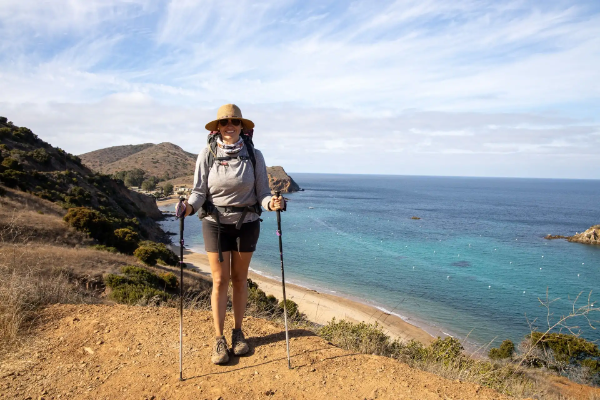Backpacking is an exciting outdoor activity that combines hiking and camping. It allows you to explore nature while carrying all your gear in a backpack. Whether you’re a beginner or a seasoned hiker, having the right gear is essential for a successful trip. In this article, we’ll cover everything you need for backpacking, from essential gear to tips for a safe and enjoyable experience.
1. Choosing the Right Backpack
Backpack Size
The first step in preparing for backpacking is selecting the right backpack. Choose a size that suits your trip length:
Daypack (15-30 liters): For short trips or day hikes.
Weekend Pack (30-50 liters): For overnight trips.
Multi-day Pack (50+ liters): For longer trips.
Fit and Comfort
Ensure the backpack fits your body. Here are some tips:
Torso Length: Measure your torso to find the right size.
Hip Belt: Choose a pack with a comfortable hip belt to distribute weight.
Adjustable Straps: Look for adjustable shoulder straps for a custom fit.
SEE ALSO: Is It Safe to Use a Propane Camping Stove Inside?
2. Shelter and Sleeping Gear
Tent
A reliable tent protects you from the elements. Consider these factors:
Weight: Lightweight tents are easier to carry.
Capacity: Choose a tent that fits the number of people.
Weather Resistance: Look for tents rated for rain and wind.
Sleeping Bag
A sleeping bag keeps you warm at night. Keep these points in mind:
Temperature Rating: Choose a bag suitable for the season.
Insulation Type: Synthetic insulation is easier to care for, while down insulation is lighter and warmer.
Sleeping Pad
A sleeping pad provides insulation and comfort. Consider these types:
Air Pads: Lightweight and compact but can puncture easily.
Foam Pads: Durable and affordable, but bulkier.
3. Cooking Gear
Stove
Cooking on the trail is essential. Here are the main types of stoves:
Canister Stoves: Easy to use and lightweight.
Alcohol Stoves: Simple and inexpensive, but take longer to cook.
Wood-Burning Stoves: Use natural materials but may be less efficient.
Cookware
You need pots and pans for cooking. Look for:
Lightweight Materials: Aluminum or titanium pots are great for backpacking.
Multi-functional Gear: A pot that doubles as a bowl can save weight.
Utensils
Bring essential utensils:
Spork: A spoon and fork combination saves space.
Knife: Useful for food preparation and other tasks.
Cutting Board: A lightweight cutting board is handy for meal prep.
Food and Water
Plan your meals ahead. Consider these food options:
Dehydrated Meals: Lightweight and easy to cook.
Snacks: Energy bars, nuts, and dried fruits for quick fuel.
Water Treatment
Water is crucial. Bring a water filter or purification tablets to ensure clean drinking water.
4. Clothing Essentials
Layering System
Dress in layers to adapt to changing weather conditions:
Base Layer: Moisture-wicking shirts to keep you dry.
Insulation Layer: Fleece or down jackets for warmth.
Outer Layer: Waterproof jackets to protect against rain.
Footwear
Proper footwear is vital for comfort and safety:
Hiking Boots: Sturdy and supportive boots are ideal for rough terrain.
Socks: Wool or synthetic socks keep your feet dry and prevent blisters.
Accessories
Don’t forget these essentials:
Hat: A wide-brimmed hat protects you from the sun.
Gloves: Warm gloves are essential for cold weather.
Sunglasses: Protect your eyes from UV rays.
5. Navigation and Safety Gear
Map and Compass
Even if you have a GPS, carry a physical map and a compass. Familiarize yourself with their use.
First Aid Kit
A first aid kit is essential for any trip. Include these items:
Bandages: For cuts and scrapes.
Antiseptic Wipes: To clean wounds.
Pain Relievers: For headaches and muscle aches.
Emergency Gear
Prepare for emergencies with these items:
Whistle: Signal for help if needed.
Multi-tool: Useful for various tasks.
Headlamp: Essential for visibility at night.
6. Personal Items
Toiletries
Bring lightweight toiletries. Essential items include:
Biodegradable Soap: Good for washing dishes and yourself.
Toilet Paper: Pack it out if there are no facilities.
Insect Repellent and Sunscreen
Protect yourself from bugs and sunburn. Choose lightweight, travel-sized options.
7. Packing Tips
Weight Distribution
Pack your backpack carefully to maintain balance:
Heavy Items: Place them close to your back and at the bottom.
Light Items: Keep them at the top or in side pockets.
Organize Your Gear
Use packing cubes or stuff sacks to keep your gear organized. This makes it easier to find items quickly.
8. Planning Your Trip
Choose Your Destination
Research potential backpacking trails. Look for:
Trail Difficulty: Match the trail with your skill level.
Weather Conditions: Check the forecast before you go.
Duration and Itinerary
Plan how long you’ll be out and your daily itinerary. Allow flexibility for unforeseen circumstances.
Leave No Trace Principles
Practice Leave No Trace principles to protect nature:
Pack Out What You Pack In: Carry all trash with you.
Stay on Trails: Protect vegetation and wildlife by sticking to established paths.
Conclusion
Backpacking is an enriching experience that offers adventure and connection with nature. By preparing properly and bringing the right gear, you can enjoy your time outdoors safely and comfortably. Always remember to plan your trips carefully, prioritize safety, and respect the environment. Happy backpacking!
Related topics:
- Is Mount Batur Worth It? A Comprehensive Guide
- How Long is the Annapurna Base Camp Trek?
- Best Hikes in Canmore, Alberta

